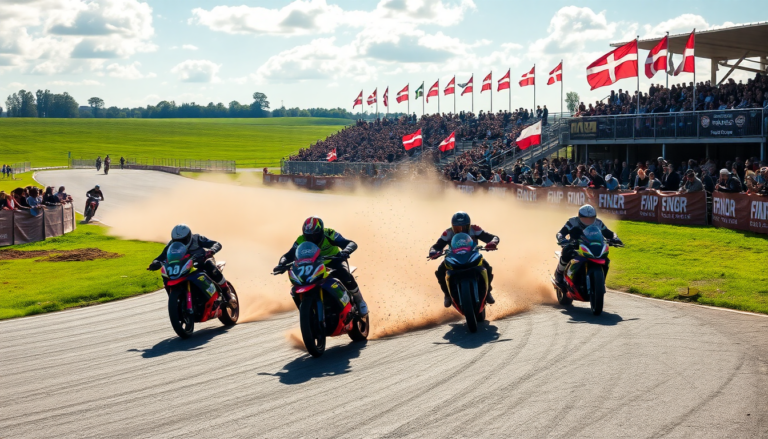Argomenti trattati
The recent FIM Speedway Grand Prix World Championship Challenge in Holsted, Denmark, was nothing short of exhilarating, showcasing a vibrant mix of talent and fierce competition among the riders. Polish rider Dominik Kubera, along with Kacper Woryna, Denmark’s Leon Madsen, and Latvia’s Andžejs Ļebedevs, clinched their spots for the upcoming season. This prestigious event not only highlighted the thrilling speed of the sport but also the strategic acumen required to excel on the track. Can you feel the excitement buzzing in the air as these athletes race for glory?
The Competitive Landscape of the Championship
Held on a warm and dry evening at the Moldow Speedway Arena, the Championship Challenge offered perfect racing conditions. From the very first heat, the competition was fierce, with each rider pushing their limits. Kubera, who finished third in last season’s SGP, kicked off the event with a commanding performance, triumphing over Kim Nilsson in the first heat. Local favorite Michael Jepsen Jensen also made a splash, winning his initial heat before facing disqualification, which surely left many fans on the edge of their seats.
As the races unfolded, the dynamics shifted rapidly. Woryna and Madsen showcased their competitive edge with successive victories, emphasizing the importance of strategy in the sport. Jensen’s unexpected disqualification added a dramatic twist, significantly impacting his chances. It became clear that consistency and performance under pressure were crucial for moving up in the rankings. How much can a single race change the course of an entire competition?
Key Performances and Turning Points
As the event progressed, certain riders began to shine as clear frontrunners. Woryna took the lead after defeating Kubera in one of their heats, while Madsen’s consistent wins kept him firmly in the mix. Ļebedevs also impressed with multiple wins, solidifying his position among the elite competitors. The intensity of the competition was palpable, with each rider striving to outperform their rivals for a coveted top four spot that guarantees entry into the upcoming season’s SGP.
As the final races approached, the stakes couldn’t have been higher. Kubera, Woryna, and Madsen each showcased their exceptional skills, leading the pack with eight points. The final heats were pivotal, determining not just the qualifying spots, but also the podium placements. Kubera’s ultimate victory in the last race was a testament to his skill and determination, placing him alongside Woryna and Madsen in the top positions. Isn’t it fascinating how every race can shift the balance of power among competitors?
Conclusion and Future Implications
The FIM Speedway Grand Prix World Championship Challenge has set the stage for an electrifying upcoming season, with seasoned riders displaying their dominance while newcomers hinted at their potential. The thrilling performances in Holsted underscored the vital roles of strategy, consistency, and adaptability in the fast-paced world of speedway racing. As fans and competitors gear up for the next season, the lessons learned from this challenge will undoubtedly influence future strategies and expectations. What will the next season hold for these talented riders?
The excitement of the races combined with the riders’ incredible skills promises a thrilling season ahead, with all eyes now turning to the Speedway Grand Prix. As the sport evolves, riders must stay sharp and focused to maintain their competitive edge. Are you ready for what’s next in this high-octane journey?

